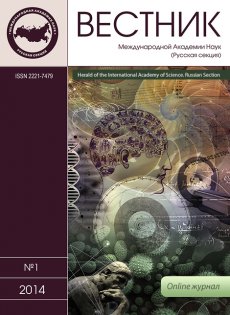J. von Uexküll\'s Concept of Umwelt and the Prospects of the Ecological Thought
H. N. Knyazeva
National research university «Higher school of economics» I. M. Sechenov First Moscow State Medical University
Abstract
The concept of Umwelt coined in science by Jakob von Uexkуll in under consideration in the article. A certain worldview can be developed on the basis of this concept which is of great significance for the development of the modern ecological universalism and for the elaboration of strategic imperatives of ecological thinking. The research is at the crossroad of four scientific fields: biosemiotics, the theory of complex systems, cognitive science and the theory of ecological thought. The concept of Umwelt as a specific environment to which any biological species or its separate individual is adapted and which is constructed by it, introduced by von Uexküll in 1909, has stimulated an intensive development of biosemiotics in the 20th century. In the modern theory of complex systems, there exist several important notions, such as openness and nonlinear bounds of a system with its environment as well as the notion of autopoiesis (H. Maturana and F. Varela) which has a powerful methodological capacity. In the modern cognitive science, the conception of enactivism (F. Varela and E. Thompson) is under rapid development now. Enactivism signifies building of a cognitive actor into a medium mastered and constructed by it. And in the theory of ecological thought, rules of soft management and of dialogue of a human with nature seem to be the most adequate ones nowadays. The study of the mutual intersection of these disciplinary fields allows us to elaborate a real interdisciplinary platform for demonstration of significance of the concept of Umwelt for the development of the theory of ecology, for the holding a reasonable position in discussions about sustainable development and sustainable futures as well as about the role of education for sustainable development of the world.
Language: russian
Summary
H. N. Knyazeva
J. von Uexküll\'s Concept of Umwelt and the Prospects of the Ecological Thought // Electronic periodical “Herald of the International Academy of Sciences. Russian Section”, 2014. #1
